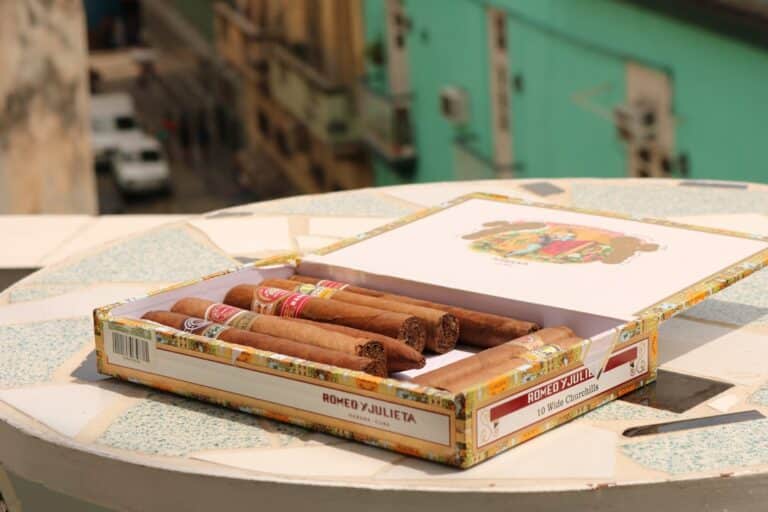Complete Guide to Cigar Wrappers
When you light up a cigar, the experience is not just about the tobacco inside; it’s also significantly influenced by the wrapper. The wrapper is the outermost leaf of the cigar, and it plays a crucial role in both the aesthetics and the overall smoking experience. As you delve into the world of cigars, understanding the importance of the wrapper will enhance your appreciation for this timeless craft.
The wrapper not only contributes to the visual appeal of the cigar but also affects its flavor, aroma, and burn characteristics. The wrapper is often considered the most important component of a cigar because it is the first thing you see and touch. Its texture, color, and sheen can tell you a lot about the quality of the cigar.
A well-constructed wrapper can elevate a mediocre blend into something extraordinary, while a poorly made one can ruin even the finest tobacco. As you explore different cigars, take a moment to appreciate the craftsmanship that goes into selecting and applying the wrapper, as it is an art form that requires skill and precision.
Key Takeaways
- Understanding the role of the wrapper in cigar construction is essential for cigar enthusiasts.
- Exploring the different varieties and characteristics of cigar wrappers can help in making informed choices.
- Factors such as flavor, burn, and appearance should be considered when selecting a cigar wrapper.
- Proper care and storage practices are crucial for preserving the quality of cigar wrappers.
- Different wrappers can significantly impact the taste of a cigar, making it important to understand their influence.
Types of Cigar Wrappers: Exploring the Different Varieties and Their Characteristics
Rich and Robust: Broadleaf Wrappers
Broadleaf wrappers are known for their rich, robust flavors and dark color, often imparting notes of chocolate and coffee. If you enjoy a full-bodied smoke, you may find that a Broadleaf wrapper suits your palate perfectly.
Smooth and Creamy: Connecticut Shade Wrappers
On the other hand, Connecticut Shade wrappers are lighter in color and offer a milder flavor profile. These wrappers are grown under shade to protect them from direct sunlight, resulting in a smooth and creamy smoking experience. If you prefer something more subtle and nuanced, a Connecticut Shade wrapper might be your go-to choice.
Spicy and Complex: Habano Wrappers
Habano wrappers, originating from Cuba, are celebrated for their spiciness and complexity. As you explore different cigars, pay attention to the wrapper type, as it can dramatically alter your perception of flavor and strength.
Choosing the Right Cigar Wrapper: Factors to Consider When Selecting a Wrapper for Your Cigar

When selecting a cigar, the wrapper is one of the first aspects you should consider. Your personal taste preferences play a significant role in this decision. Are you drawn to bold flavors or do you prefer something more delicate?
Understanding your palate will help you choose a wrapper that complements your smoking style. Additionally, consider the occasion for which you are selecting a cigar; a celebratory event might call for a richer, more complex wrapper, while a casual evening might be better suited to something lighter. Another factor to consider is the region where the tobacco is grown.
Different regions produce wrappers with distinct characteristics due to variations in climate and soil conditions. For instance, Nicaraguan wrappers tend to be robust and full-bodied, while Ecuadorian wrappers often provide a smoother smoking experience with subtle sweetness. As you explore various cigars, take note of how different wrappers from different regions affect your overall enjoyment.
This knowledge will empower you to make informed choices that align with your preferences.
Cigar Wrapper Care and Storage: Best Practices for Preserving the Quality of Your Cigar Wrappers
Proper care and storage of your cigars are essential for maintaining the quality of the wrappers. Cigars should be stored in a humidor at an optimal humidity level of around 70%. This environment helps preserve the integrity of the wrapper leaf, preventing it from drying out or becoming too moist.
If you notice that your cigars are losing their sheen or becoming brittle, it may be time to check your humidor’s humidity levels. In addition to humidity control, temperature is another critical factor in cigar storage. Ideally, cigars should be kept at a consistent temperature between 65°F and 70°F.
Fluctuations in temperature can lead to issues such as mold growth or damage to the wrapper. Regularly inspecting your humidor and ensuring that it is clean and well-maintained will go a long way in preserving the quality of your cigar wrappers. By taking these steps, you can ensure that each cigar you smoke delivers an optimal experience.
The Influence of Cigar Wrappers on Flavor: How Different Wrappers Impact the Taste of a Cigar
The flavor profile of a cigar is intricately tied to its wrapper. Each type of wrapper brings its own unique characteristics to the table, influencing not only taste but also aroma and mouthfeel. For example, a Maduro wrapper may impart rich notes of cocoa and earthiness, while a Sumatra wrapper might offer hints of spice and sweetness.
As you experiment with different cigars, pay attention to how each wrapper affects your overall experience. Moreover, the thickness and oiliness of the wrapper can also play a role in flavor delivery. A thicker wrapper may provide a slower burn and allow for more complex flavors to develop over time.
Conversely, a thinner wrapper may burn faster but can also enhance certain flavors due to its ability to release oils more readily. Understanding these nuances will help you appreciate how different wrappers contribute to the overall flavor journey of each cigar you enjoy.
Cigar Wrapper Rolling Techniques: The Art of Applying and Rolling a Wrapper onto a Cigar

The Importance of Leaf Selection
Cigar rollers must carefully choose leaves that meet specific criteria, including color, texture, and thickness. This attention to detail is essential for creating a high-quality cigar that burns evenly and consistently.
Rolling Techniques: A Matter of Style
The technique used to roll a cigar can vary greatly, with some rollers preferring the “bunching” method and others opting for a more traditional approach. Each method produces a unique result, and understanding the differences can enhance one’s appreciation for the craftsmanship involved.
Appreciating the Craftsmanship
As you explore the world of cigars, learning about rolling techniques can deepen your appreciation for the art form. You may find yourself drawn to specific brands or rollers based on their unique styles and methods, and develop a greater appreciation for the skill and precision that goes into creating each cigar.
Cigar Wrapper Trends: Current and Emerging Trends in the World of Cigar Wrappers
The world of cigars is ever-evolving, with new trends emerging regularly that influence cigar wrappers. One current trend is the increasing popularity of organic and sustainably sourced wrappers. As consumers become more environmentally conscious, many brands are responding by offering cigars made from tobacco grown without synthetic pesticides or fertilizers.
This shift not only appeals to eco-conscious smokers but also often results in unique flavor profiles that reflect the terroir of organic farming practices. Another trend gaining traction is experimentation with hybrid wrappers that combine characteristics from different tobacco varieties. These innovative blends can create exciting new flavors and experiences for smokers looking for something beyond traditional options.
As you explore various brands and offerings, keep an eye out for these trends; they may lead you to discover new favorites that align with your evolving tastes.
The Importance of Cigar Wrappers and Their Role in the Enjoyment of Cigars
In conclusion, cigar wrappers play an indispensable role in both the construction and enjoyment of cigars. From influencing flavor profiles to enhancing visual appeal, they are far more than just an outer layer; they are integral to the overall experience. By understanding the various types of wrappers available, considering factors when choosing one, and practicing proper care and storage techniques, you can elevate your cigar enjoyment to new heights.
As you continue your journey through the world of cigars, remember that each wrapper tells its own story—one that reflects not only its origin but also the craftsmanship behind it. Embrace this knowledge as you explore new cigars and savor each moment spent enjoying them. The next time you light up, take a moment to appreciate not just what’s inside but also what envelops it—the wrapper that makes each cigar unique and special.
If you’re interested in learning more about cigar accessories, be sure to check out The Humidor Depot’s online store. They offer a wide range of products to enhance your cigar smoking experience, from humidors to cutters to lighters. It’s a great resource to complement the information provided in the Complete Guide to Cigar Wrappers.
FAQs
What are cigar wrappers?
Cigar wrappers are the outermost layer of a cigar, made from tobacco leaves. They play a crucial role in the overall flavor, aroma, and appearance of the cigar.
What are the different types of cigar wrappers?
There are several types of cigar wrappers, including Connecticut, Maduro, Habano, Corojo, and Cameroon. Each type has its own unique characteristics and flavors.
What factors should be considered when choosing a cigar wrapper?
When choosing a cigar wrapper, factors such as flavor, strength, appearance, and aroma should be considered. Different wrappers can significantly impact the overall smoking experience.
How does the wrapper affect the flavor of a cigar?
The wrapper of a cigar can greatly influence its flavor. For example, a Connecticut wrapper tends to be milder and smoother, while a Maduro wrapper can provide richer, sweeter flavors.
What is the significance of the color of a cigar wrapper?
The color of a cigar wrapper, often referred to as its “shade,” can indicate the flavor and strength of the cigar. For example, a darker wrapper may suggest a stronger, bolder flavor.
How does the wrapper affect the burning and smoking characteristics of a cigar?
The wrapper can impact the burning and smoking characteristics of a cigar. For example, a thicker, oily wrapper may burn more slowly and evenly, while a thinner, drier wrapper may burn faster.
Are there any specific pairing recommendations for different cigar wrappers?
Certain cigar wrappers may pair better with specific beverages, such as coffee, whiskey, or rum. For example, a Maduro wrapper may complement the flavors of a rich, dark coffee.






